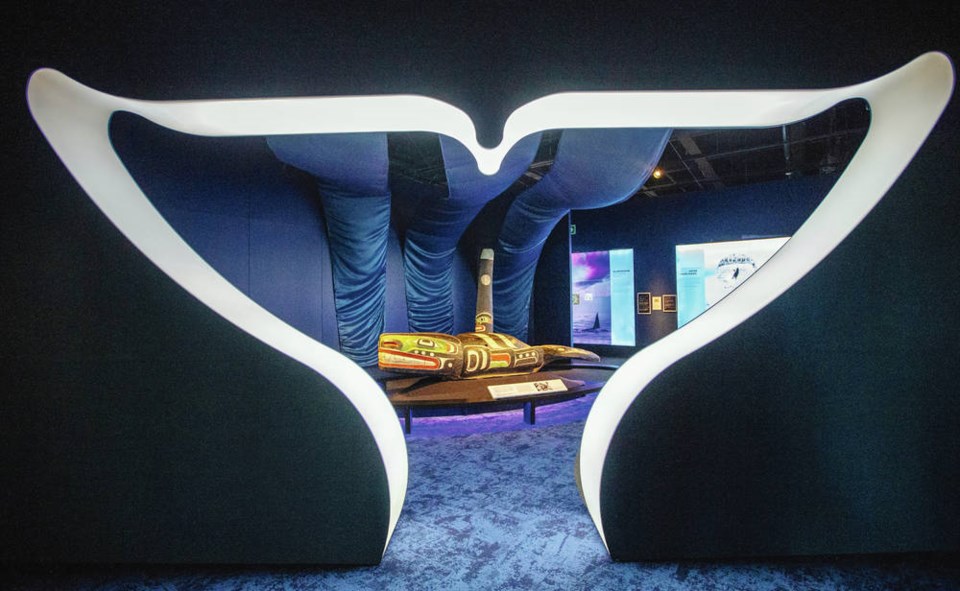ŌĆ£We are not the museum we wanted to be. And weŌĆÖre not the museum we should be,ŌĆØ Royal sa╣·╝╩┤½├Į Museum Acting CEO Dan Musyka was quoted as saying June 29 in these pages.
His comments were in response to results of an ┬Łindependent investigation and staff survey that found ┬ŁIndigenous staff have ┬Łexperienced discrimination at the museum, and museum leadership failed to manage the environment fostering ┬Łdiscriminatory behaviour.
In another June 29 story in these pages, about calls to cancel sa╣·╝╩┤½├Į Day, Winnipeg Indigenous writer David ┬ŁRobertson is quoted as saying: ŌĆ£I think we really need to question, what country are we living in? Because I donŌĆÖt think itŌĆÖs the country that we think it is, or that we thought it was.ŌĆØ
Two similar quotes by ┬Łdifferent people from ┬Łdifferent backgrounds and different areas of the country speaking in response to different events.
But they address one ┬Łunderlying issue.
The Royal sa╣·╝╩┤½├Į MuseumŌĆÖs investigation and internal ┬Łinclusion and psychological safety survey were launched after the museumŌĆÖs head of the Indigenous collections and ┬Łrepatriation department resigned in June 2020. In her resignation speech, Lucy Bell, a member of the Haida Nation, spoke of a culture of ┬Łracism and discrimination at the museum. The museum released a ┬Łsummary of the investigation in a report that also summarized the survey results.
The calls to cancel this yearŌĆÖs sa╣·╝╩┤½├Į Day celebrations came after hundreds of undocumented graves were discovered on the grounds of former residential schools in sa╣·╝╩┤½├Į and Saskatchewan. The discoveries provide further evidence of widespread abuse at the schools. In this case, residential-school, church and political leadership failed to manage the environment that fostered the abuse for more than a century. They permitted and even encouraged it.
Museums mirror the ┬Łcommunity. What is found in the galleries and collections of the Royal sa╣·╝╩┤½├Į Museum is not just a sampling of sa╣·╝╩┤½├ĮŌĆÖs cultural and natural history but a reinforcement of our community values, priorities, preferences and preoccupations through time.
Many museum ┬Łcollections were amassed during the course of empire and ┬Łcolonization. Our provincial museum is no ┬Łexception. It has, for ┬Łexample, Indigenous ┬Łcollections, which Bell oversaw until her ┬Łresignation. Many of those ┬Łartifacts and specimens were taken and kept from sa╣·╝╩┤½├Į First Nations communities, ┬Łreinforcing colonial power, social and political relationships.Similarly, what happens behind the scenes at the museum reflects what happens in our streets, businesses, schools and universities and political ┬Łinstitutions. Our museum is ┬Łsa╣·╝╩┤½├Į and sa╣·╝╩┤½├Į writ small.
But over the last decade, the global museum community has been debating what museums are. The industry has defined ŌĆ£museumŌĆØ since the 1970s as ŌĆ£a non-profit, permanent institution in the service of society and its development, open to the ┬Łpublic, which acquires, conserves, researches, communicates and exhibits the tangible and ┬Łintangible heritage of ┬Łhumanity and its environment for the ┬Łpurposes of education, study and enjoyment.ŌĆØ
The definition is ┬Łstraightforward, but it ignores much of what museums do. It overlooks the social, economic and political roles museums play within their communities and the different models that ┬Łmuseums now operate under.
A proposed and contested new definition describes museums as ŌĆ£democratising, inclusive and
polyphonic spacesŌĆØ that ┬ŁŌĆ£contribute to human ┬Łdignity and social justice, global ┬Łequality and planetary well-being.ŌĆØ This, advocates say, better defines the 21st-century museum.
A quick survey of the debate indicates that such a museum is a social, political, economic and environmental force. Such a museum, it seems, recognizes the need to be accessible by marginalized and overlooked communities. This means ┬Łengaging with and including those communities and their ┬Łstories in its galleries, its work and its workers.
A modern museum confronts the past and tells its difficult, controversial and ugly stories. It presents and grapples with the issues its communities are struggling with. It also promotes community, connection, health and well-being.
The Royal sa╣·╝╩┤½├Į Museum is beginning its own modernization. New facilities are planned, core galleries are to be replaced with exhibits ┬Łbetter ┬Łreflecting the voices and ┬Łhistory of all of sa╣·╝╩┤½├ĮŌĆÖs peoples. The agencyŌĆÖs service plan ┬Łspecifies ┬Ładvancing ┬Łreconciliation by working closely with ┬ŁIndigenous ┬Łcommunities ┬Łseeking the return of ┬Łancestral remains and ┬Łcultural objects to their ┬Łcommunities. The ┬ŁmuseumŌĆÖs mandate letter lists ┬Łreconciliation, equity and ┬Łanti-racism among the agencyŌĆÖs priorities.
Additional work focuses on the human side ŌĆö training staff to build an inclusive culture, aligning operations with the principles of the Declaration on the Rights of Indigenous Peoples Act, and better resourcing the Indigenous collections and ┬Łrepatriation department.
As the museum undertakes to bring itself fully into the 21st┬Ācentury, so, too, is the broader community needing to modernize and further ┬Łreconciliation in our streets, businesses, schools, universities and political institutions.
Musyka and Robertson may have been addressing different specifics, but essentially they were saying the same thing.
- - -
To comment, email a letter to the editor: [email protected]



